|
Celebration of our 150th Anniversary Continues
Survey Catches Nearly 2,500 Atlantic Sharks

Every two to three years scientists capture and tag sharks along the southeast Atlantic coast to collect a variety of data. The survey is conducted in U.S. waters from Florida to the mid-Atlantic area to provide relative abundance indices of coastal shark populations. Working from the contracted commercial longline vessel F/V Eagle Eye II, scientists from our Narragansett lab in Rhode Island and vessel crew caught 2,462 sharks of 11 species. Sandbar sharks were the most common shark caught. The vessel left Port Royal, South Carolina to begin the survey just south of Fort Pierce, Florida and ended at the North Carolina–Virginia border.
|
Spring Gulf of Maine Cooperative Bottom Longline Survey Concludes
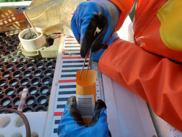
Over the course of three weeks in April and May, two vessels sampled 45 stations in the central Gulf of Maine to conclude the spring Gulf of Maine Bottom Longline Survey. These stations are located in areas of rough bottom, places where fish typically hide and are hard to sample with trawl gear. A number of commercially important fish species—including hake, Acadian redfish, and wolffish, among others—prefer these habitats. To keep these fisheries sustainable, managers need accurate stock assessments, which require the data this survey provides.
|
Northeast Spring Bottom Trawl Survey Completed
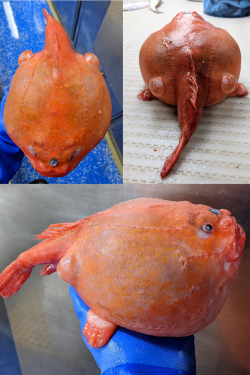
On May 27, we concluded our 2021 spring bottom trawl survey aboard the NOAA Ship Henry B. Bigelow. Those aboard conducted resource survey tows and temperature and salinity sampling at 317 of 353 planned stations (90 percent completion). They finished plankton tows at 92 of 105 planned stations (87 percent completion). The Bigelow supports a variety of marine research. However, the multispecies bottom-trawl survey is among the most important of its missions for monitoring the region’s fishery resources, and it is the longest running of its kind in the world.
|
Right Whale Use of Southern New England Wind Energy Areas Increasing
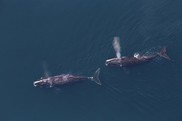
Right whales are increasing their use of southern New England waters, including regions slated for offshore wind energy development, according to a new study of aerial survey data collected during the last decade. After the first documentation of 102 right whales occurred on one of our aerial survey flights in April 2010, marine mammal researchers began monitoring the area to quantify right whale distribution, residency, demographics, and movements in the region. Since 2017, right whales have been sighted there nearly every month, with large aggregations occurring during the winter and spring. With offshore wind energy development planned in the region, working with industry and other stakeholders to minimize potential impacts on right whales and other protected species is crucial.
|
Fisheries of the Northeast
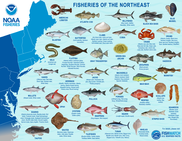
Here in the Northeast region, ranging from North Carolina to Maine, we have some of the richest and most diverse fisheries in the nation. Well over 100 species, including finfish, shellfish, urchins, and seaweeds, are landed in the Northeast. Check out this new graphic to learn more about the species harvested in the region and visit FishWatch for facts and recipes.
|
Marine Protected Species Abundance Survey Underway
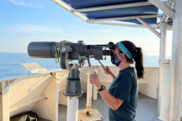
This cruise aboard the NOAA Ship Henry B.Bigelow, supports the Atlantic Marine Assessment Program for Protected Species, a partnership with the Bureau of Ocean Energy Management, the U.S. Fish and Wildlife Service, and the U.S. Navy. The information gathered during this survey provides seasonal abundance estimates for marine mammals, turtles, and seabirds in the western North Atlantic Ocean. Follow chief scientist Debra Palka as she blogs about some of the experiences and findings at sea from this survey.
|
Meet our 2021 Summer Students

Our Science Center hosted more than 50 students this year! Most are undergraduates, but there are also opportunities for high school and post-graduate students. Some were recruited through national-level programs and others through regional efforts. These are mostly summer opportunities, but a few are available at other times of the year. All are focused on hands-on science and encouraging talented young people from all types of educational institutions to consider a career in marine science. So let’s meet them and see what they’ve been up to:
|
Looking at the Longline Survey Catch Through a New Lens
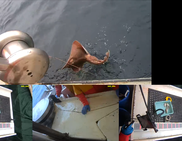
The COVID-19 pandemic introduced many challenges to the Gulf of Maine Bottom Longline Survey, but our Cooperative Research Branch used this opportunity to apply new technology to better understand the survey gear and catch. In the fall of 2020 and spring of 2021, we partnered with Teem Fish Monitoring to capture video of gear retrieval to evaluate the catch (or lack thereof) on each longline hook. As Cooperative Research Branch staff review the footage, they record what is on each hook (bait, fish, or empty). These data will be used to assess how hook-specific catch differs among seafloor types, depth, and time of day. Ultimately, this work will be used to refine catch rate estimations derived from the longline survey, which are used in stock assessments.
|
Research Set Aside Programs
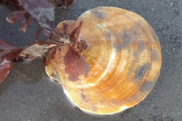
Unique to the New England/Greater Atlantic region, Research Set-Aside Programs have a demonstrated track record for supporting applied research that informs fishery management decisions and improves stock assessments. NOAA Fisheries has selected 13 projects for 2021-2022 awards. The selected projects focus on research priorities identified by the New England Fishery Management Council, which established the Sea Scallop RSA Program in 1999.
|
From The Director: Offshore Wind is Here

Offshore wind development is an issue of growing interest in the Northeast United States. NOAA Fisheries is working closely with partners to develop the science to support the coexistence of offshore wind, sustainable fisheries, and wildlife conservation. We recently awarded a $155,000 grant to The Responsible Offshore Development Alliance (RODA) to conduct a second “Synthesis Of the Science” symposium on floating offshore wind interactions with fisheries. This funding builds upon the $150,000 grant NOAA Fisheries awarded to RODA in 2020 to conduct the first-of-its-kind symposium on the current science regarding fisheries and offshore wind interactions. Our scientists also recently participated in an international workshop to define socio-economic implications of offshore wind on fishing communities. These are but two examples of our work related to offshore wind energy development, and they emphasize two of our priorities: excellent science and working with partners. Visit our wind page to stay up to date on our offshore wind work. Jon Hare, Center Director
|
|
|
Upcoming Events
Aug 3 Research Track Working Group: 2022 Improving Assessments for Black Sea Bass
Aug 3-5 Educator Workshop: Building Your Climate Data Story
Aug 9 Buterfish Research Track Working Group Meeting
Aug 12-Sept 20 2021 Atlantic Cod Stock Management Workshops
Aug 16 Saltonstall-Kennedy Grant Program Pre-Proposals Due
Sept 6 National Marine Sanctuary’s Get Into Your Sanctuary Photo Contest Ends
Sept 13-17 2021 Management Track Fisheries Stock Assessment September Meeting
Oct 9-10 Ocean Fun Days at the NOAA Fisheries James J. Howard Lab, Sandy Hook, NJ
|
|
|
|
|